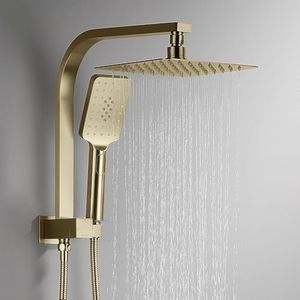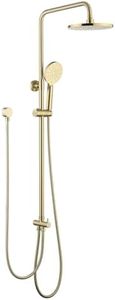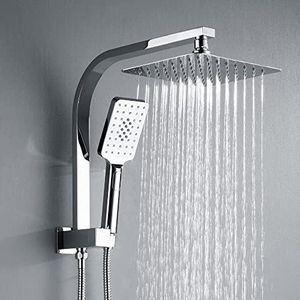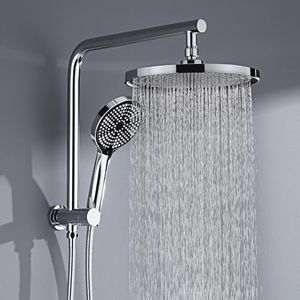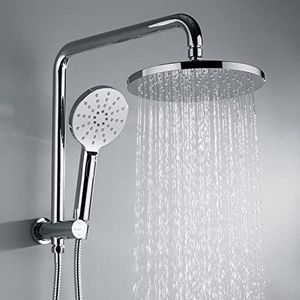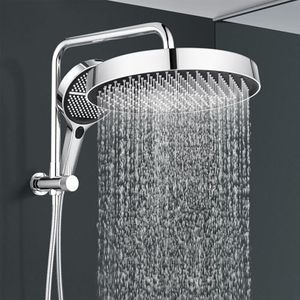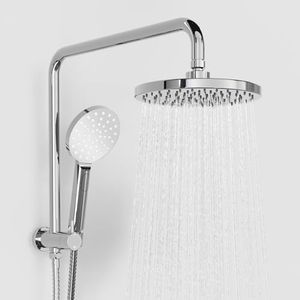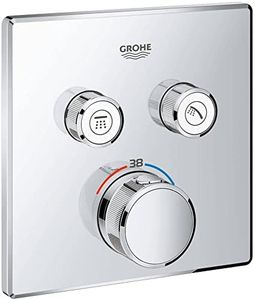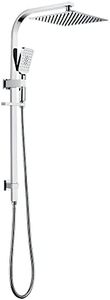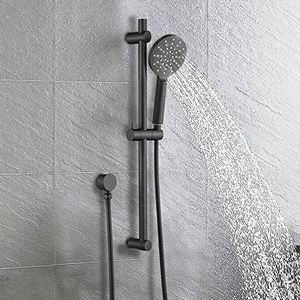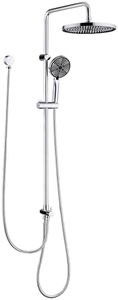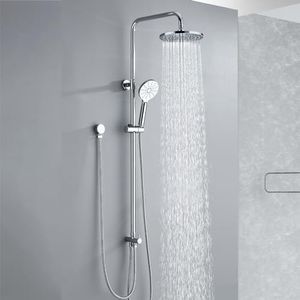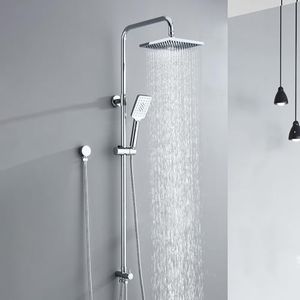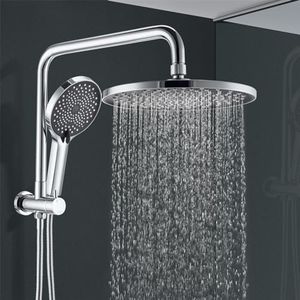We Use CookiesWe use cookies to enhance the security, performance,
functionality and for analytical and promotional activities. By continuing to browse this site you
are agreeing to our privacy policy
10 Best Shower Systems
From leading brands and best sellers available on the web.Buying Guide for the Best Shower Systems
When choosing a shower system, it's important to think about both your comfort and your bathroom's setup. A shower system is more than just a showerhead; it often includes controls, sprayers, and sometimes even extra features like thermostatic valves. By understanding the main specifications, you can match your daily habits and preferences to the system that will best serve you. Think about your water pressure, space, style, and how much control you want over your shower experience.Water Pressure CompatibilityWater pressure compatibility refers to whether the shower system can function well with the water pressure available in your home. It's important because an incompatible system can lead to weak flow or even system damage. Typically, there are low-pressure, medium-pressure, and high-pressure systems. If you have older plumbing or a gravity-fed supply, look for systems that work with low pressure. Homes with good modern plumbing can often support high-pressure systems, which can deliver more powerful showers. To pick the right one, check your water pressure or ask a plumber, and make sure the system you select can operate effectively at your pressure level.
Showerhead TypeThe showerhead type determines the style and spray pattern you experience. This can range from fixed heads to handheld or rain showerheads. Fixed heads are attached to the wall or ceiling and provide steady streams, handheld ones can be removed for targeted rinsing, and rain showerheads are larger and designed for a gentle, wide spray. Consider your routine: if you want versatility or need to wash specific areas more easily, a handheld option is helpful. For a luxurious, gentle effect, a rain shower is ideal. Think about who will use the shower and their preferences to select the right type.
Number of Spray FunctionsThis specification tells you how many different spray patterns or modes are available, such as massage, mist, or jet. More spray functions give flexibility for different needs or moods. Some systems have just one steady stream, while others can offer five or more spray options. If all users prefer simplicity, a basic model is fine. However, if members of your household appreciate variety, or you like to change between gentle and invigorating showers, look for models with multiple spray choices.
Control MechanismThe control mechanism is how you set water temperature and pressure. This can be a single lever, separate knobs, or a digital panel. Some systems also use thermostatic controls, keeping the water at a set temperature and preventing sudden shifts if someone uses water elsewhere in the house. Basic controls are straightforward but may not offer fine-tuned temperature management. Thermostatic or digital controls are great for families with kids or anyone sensitive to temperature changes. Choose based on your need for safety, ease, and precise control.
Installation TypeInstallation type refers to how and where the system is mounted. Surface-mounted systems attach to your existing plumbing and are easier to install, while concealed systems hide pipes for a sleeker look but require more work—usually best during a renovation. If you want to update your shower without major changes, choose a surface mount. For a cleaner, modern design and if remodeling, a concealed system might suit you. Your choice should fit both your bathroom's structure and your willingness to undertake installation work.
Material and Build QualityMaterial and build quality indicate how durable and easy to maintain the shower system will be. Options include plastic, stainless steel, or brass, sometimes with finishes like chrome or matte black. Plastic is affordable and light, but less durable. Metal systems, especially brass or stainless steel, last longer and resist corrosion. If longevity and style are your priorities, pick sturdy metals with a finish you like. If you're looking for a simple option or are equipping a rarely used bathroom, plastic can be a reasonable choice.
